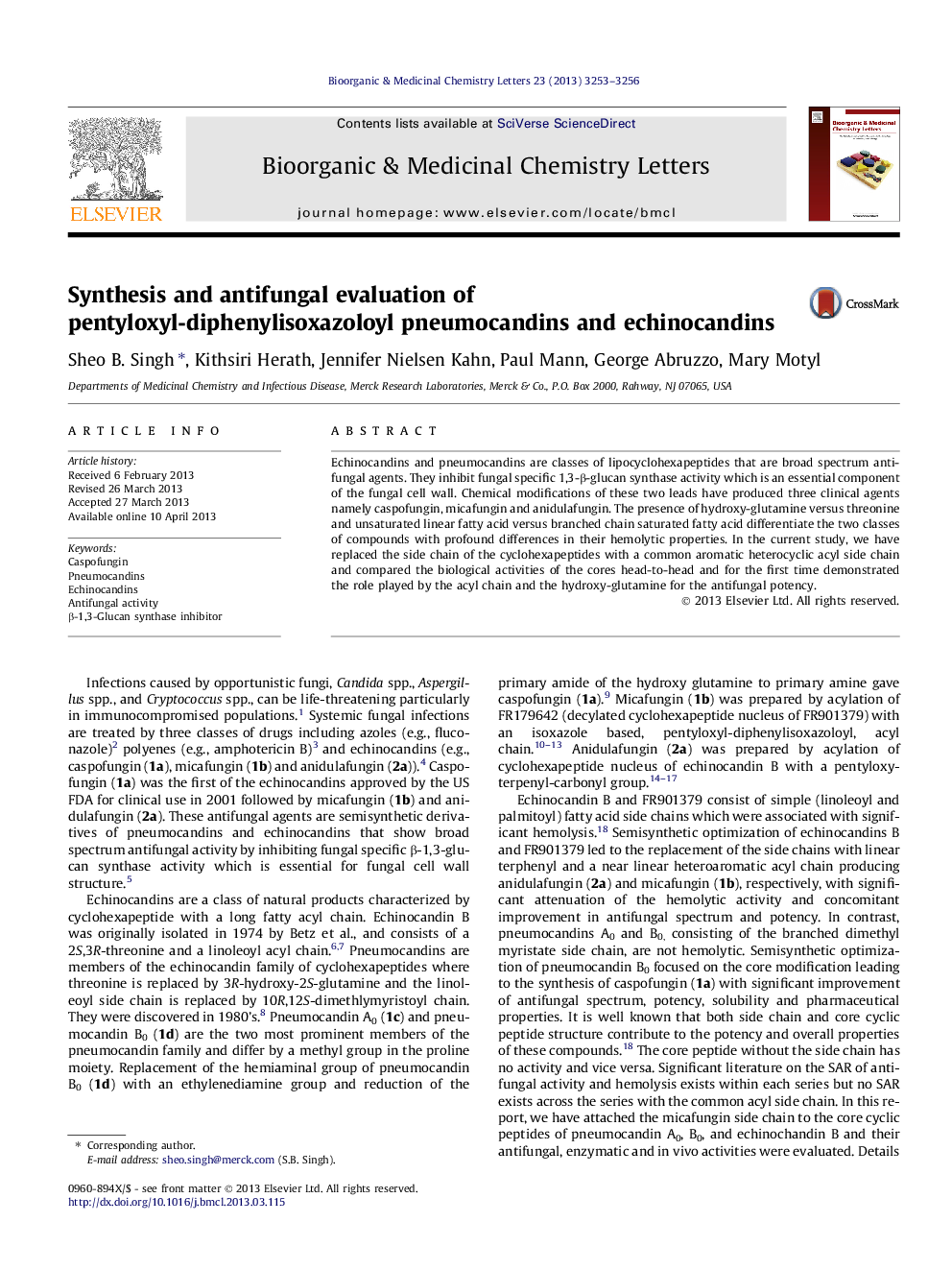| Article ID | Journal | Published Year | Pages | File Type |
|---|---|---|---|---|
| 1369155 | Bioorganic & Medicinal Chemistry Letters | 2013 | 4 Pages |
Echinocandins and pneumocandins are classes of lipocyclohexapeptides that are broad spectrum antifungal agents. They inhibit fungal specific 1,3-β-glucan synthase activity which is an essential component of the fungal cell wall. Chemical modifications of these two leads have produced three clinical agents namely caspofungin, micafungin and anidulafungin. The presence of hydroxy-glutamine versus threonine and unsaturated linear fatty acid versus branched chain saturated fatty acid differentiate the two classes of compounds with profound differences in their hemolytic properties. In the current study, we have replaced the side chain of the cyclohexapeptides with a common aromatic heterocyclic acyl side chain and compared the biological activities of the cores head-to-head and for the first time demonstrated the role played by the acyl chain and the hydroxy-glutamine for the antifungal potency.
Graphical abstractFigure optionsDownload full-size imageDownload as PowerPoint slide
